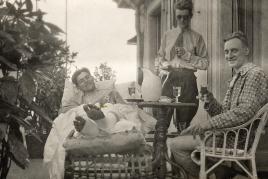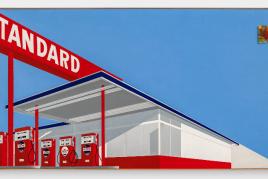Chatsworth is home to the Duke and Duchess of Devonshire, and has been passed down through 16 generations of the Cavendish family. The house is…
Sotheby's Brings 'Treasures from Chatsworth' to New York This Summer
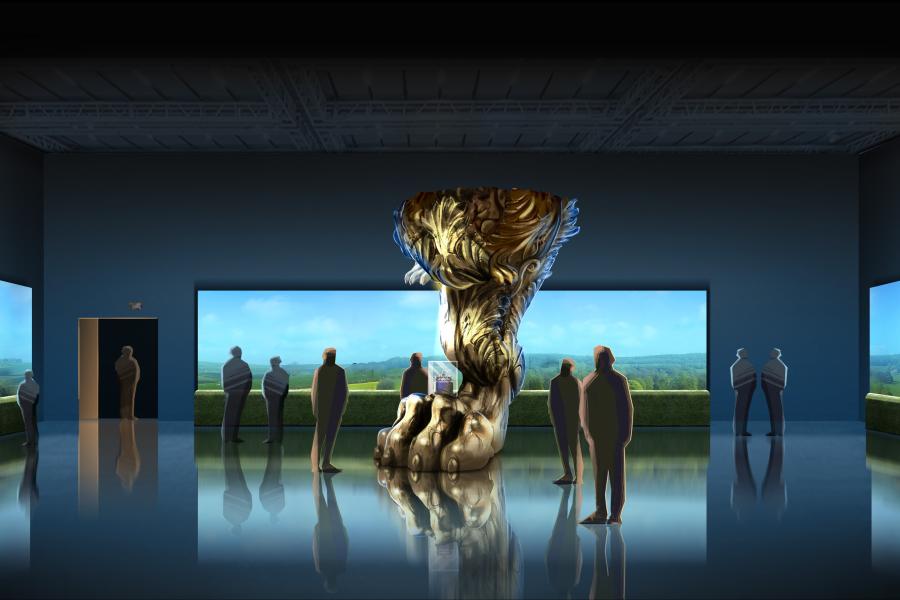 © Devonshire Collection. Reproduced by permission of Chatsworth Settlement Trustees Exhibition Design Renderings: Rendering courtesy of David Korins - Mit freundlicher Genehmigung von: sothebys.com
© Devonshire Collection. Reproduced by permission of Chatsworth Settlement Trustees Exhibition Design Renderings: Rendering courtesy of David Korins - Mit freundlicher Genehmigung von: sothebys.comWas: Ausstellung
Wann: 28.06.2019 - 18.09.2019
Chatsworth is home to the Duke and Duchess of Devonshire, and has been passed down through 16 generations of the Cavendish family. The house is renowned for the quality of its art, landscape and hospitality, and has evolved through the centuries to reflect the tastes, passions and interests of succeeding generations, standing today among the most important stately homes in the United Kingdom. Rich with thousands of objects, the Devonshire Collection represents a grand tradition of collecting by the Cavendish family spanning half a millennium, which ranks as one of the most significant collections of art and objects in Europe.
Coinciding with Sotheby’s 275th anniversary in 2019, as well as the opening of our expanded and reimagined New York galleries, the Treasures from Chatsworth exhibition will be designed by the award-winning creative director and designer David Korins, whose work includes the set designs for the Broadway musical phenomena Hamilton and Dear Evan Hansen, as well as past Sotheby’s exhibitions. The extended exhibition will offer viewers an immersive experience, featuring extraordinary objects illustrative of the Devonshire Collection while simultaneously bringing to life the experience of Chatsworth House and its spectacular grounds.
Forty-five masterworks have been selected for the Treasures from Chatsworth exhibition to represent the remarkable breadth of the Devonshire Collection – fine art from Rembrandt van Rijn to Lucian Freud, furniture and decorative objects from the 16th century to 21st-century design, and exceptional jewels, costumes, and archive materials commemorating historic occasions will all be on view to the public. A selection of individual highlights is below, with additional works to be announced throughout the spring.
Free of charge and open to the public, Treasures from Chatsworth will be on view from 28 June through 18 September 2019 in Sotheby’s New York galleries, located at 1334 York Avenue.
The Duke of Devonshire said: “It is wonderful that the first pieces to be displayed in this new gallery will be from the Devonshire Collection, and that the plans that Sotheby’s and David Korins have for the space will present these works in an entirely original and inspiring way. Since I became Deputy Chairman in 1996, the relationship between Chatsworth and Sotheby’s has developed exponentially, and continues to present new and exciting opportunities for us both. This exhibition gives us the chance to share Chatsworth with a new audience, tell people about the invaluable work of the Chatsworth House Trust charity, and to demonstrate the way in which the Devonshire Collection continues to evolve with each generation of our family. I am very much looking forward to visiting.”
Tad Smith, Sotheby’s CEO, commented: “Sotheby’s has been fortunate to share a special relationship with the Duke and Duchess of Devonshire and Chatsworth for nearly 25 years. From bringing monumental sculpture to life on the estate’s stunning grounds with Beyond Limits, to the spectacular House Style: Five Centuries of Fashion exhibition, we have been inspired by their commitment to share their home and history with the public. It is truly an honor for Sotheby’s to host treasures from this legendary collection and to share them and the mission of the Chatsworth House Trust with the American public.”
David Korins, award-winning creative director and designer who will design the Treasures from Chatsworth exhibition, stated: “I am thrilled once again to collaborate with Sotheby’s to make a new in-depth and immersive experience. It’s an added pleasure to inaugurate and celebrate Sotheby's newly-renovated home on the Upper East Side of Manhattan showing the work from Chatsworth House. It is an honor to create this one-of-a-kind walkthrough exhibition and deliver a taste of the fascinating treasures from the Devonshire Collection to New York audiences. In this experience, I’ve curated this sweeping & diverse collection of art into installations of hyper-articulated, blown-up details of the Duke and Duchess’s home. I hope that our guests will be entertained, delighted, and treated to a deeper look into the textures, details, and unique stories of the Cavendish family.”
EXHIBITION HIGHLIGHTS
REMBRANDT VAN RIJNPORTRAIT OF AN OLD MAN
This masterly painting of an old man by Rembrandt van Rijn is signed and dated 1651 – a period during which the artist painted rarely and received few portrait commissions.
Formerly one of three Rembrandt paintings in the Devonshire Collection, the work was seen in the collection of Richard Boyle, 3rd Earl of Burlington, as early as 1728, marking it as one of the earliest Rembrandt paintings ever acquired by an English collector.
It is not certain whether this work is a commissioned portrait. Alternatively, it may show an old male model, dressed in a rich exotic costume, sitting for a ‘tronie’ – a popular Dutch genre painting of the time. Such works gave the artist the opportunity to show off their technique: here, with directional lighting, Rembrandt shows his mastery through lighting in depicting character and old age, with his broad brushstrokes bringing to life the texture and weight of the man’s rich costume.
THE DEVONSHIRE PARURE
In 1856, William, 6th Duke of Devonshire, commissioned a seven-piece set of jewelry known as the Devonshire Parure, incorporating 88 carved gems from the large gem collection at Chatsworth that was assembled primarily by the 2nd and 4th Dukes of Devonshire.
The commission was a response to the Duke’s nephew’s attendance at the coronation of Tsar Alexander II of Russia, as a representative of Queen Victoria. Having previously attended the coronation of Tsar Nicholas I, the Duke could be certain that Maria, Countess Granville, would need a large and remarkable suite of jewels to furnish her wardrobe for the many functions she would attend and host.
Today the engraved gem collection at Chatsworth represents the largest such collection in private hands. Whilst prominent collections such as those of Thomas Howard, Earl of Arundel (1586-1646) and George Spencer, Fourth Duke of Marlborough (1739-1817) are now in the British Museum or dispersed through other collections both public and private, the Devonshire gems remain in the family which collected them.
LUCIAN FREUDWOMAN IN A WHITE SHIRTDEBORAH CAVENDISH, DUCHESS OF DEVONSHIRE&PORTRAIT OF A MANANDREW CAVENDISH, 11th DUKE OF DEVONSHIRE
A highlight of the Treasures from Chatsworth exhibition will be two works reflecting the long association between the leading 20th century artist Lucian Freud and the 11th Duke and Duchess, whose portraits he was commissioned to paint. The strikingly-informal nature of the works speaks to the close association between sitter and artist: many of Freud’s works in the Devonshire Collection were completed while he stayed as their guest at Chatsworth.
These two informal portraits show Andrew Cavendish, 11th Duke of Devonshire (1920–2004), father of the current duke of Devonshire, and his Duchess, Deborah (née Mitford) (1920–2014). They form part of a group of oil paintings of the 11th Duke’s family that were painted over a period of approximately 20 years. As Freud used to explain: “I work from the people that interest me… I use them to invent my pictures with”.
Of the two portraits, Woman in White, the portrait of Duchess Deborah, was the first to be painted, in 1958-60. It marked a transitional point in Freud’s career, when he started to paint in a broader, looser style. He painted the portrait of the Duke a decade later, in 1971-72. It is also unconventional and disquieting. In it he appears to be unwilling to submit to the intense scrutiny of the artist, with his head is lowered and his eyes – ‘the mirror of the soul’ – hidden.
THE PEERESS ROBE
The Peeress robe was worn by Duchess Deborah when she attended the Coronation of Elizabeth II in 1953. The Duchess writes in her book, Wait for Me, about the worry of what she was going to wear to the coronation and about finding a crimson peeress's robe in tin trunks at Chatsworth, “with velvet of exceptional quality, so soft your fingers hardly know they are touching it”.
The one problem with the robe was that the bodice was cut off the shoulder, unlike the other peeress gowns. The 11th Duke and Duchess had to seek a dispensation from the Queen to allow Deborah to wear it. The bodice had been clearly altered and the neck line is typical of the 1830s, so it is thought that this dress was originally made for the 6th Duke’s sister, Lady Georgiana Cavendish, wife of the 6th Earl of Carlisle, to wear to the coronation of William IV in 1831.
RAFFAELE MONTITHE VEILED VESTAL
On display in America for the first time ever will be one of Chatsworth’s visitors’ favorite objects: the Veiled Vestal by Victorian sculptor Raffaele Monti. Commissioned in Milan in 1846 by the 6th Duke of Devonshire – who was ahead of his time in recognizing the artist’s genius – this marble sculpture is now familiar to millions thanks to its star turn in the 2005 film adaptation of Pride and Prejudice.
A virtuoso piece of illusionistic carving, the statue is made up of four sections of Carrara marble. It shows a veiled Vestal Virgin guarding the sacred flame. In Ancient Rome, the six Vestals were virgin priestesses whose lives were dedicated to the goddess Vesta. They were responsible for ensuring that the sacred flame in Vesta’s temple in the Forum was never extinguished. The Vestals’ duty was regarded as fundamental to the safety of Rome.
Partly due to Duke’s patronage and partly for political reasons, Monti moved permanently to London in 1848. His output became prolific and his veiled figures became very popular in Britain. His career was assured with the display of his sculpted veiled figures at the capital’s Great Exhibition of 1851 – including the present work.
ANTHONY VAN DYCKPORTRAIT OF JAN SNELLECK
Anthony van Dyck’s striking drawing of the Flemish artist, draughtsmen and collector Jan Snelleck is part of a group of celebrated portraits by Van Dyck of notable people of his age. This work is from a large collection of Old Master Drawings purchased via a private sale from Nicolas Anthonis Flinck in 1723/4 by the 2nd Duke of Devonshire.
Van Dyck, a leading pupil of Rubens, was an exceptional European artist particularly in the field of portraiture. As a portrait painter in England from 1632, he revolutionised the art of the portrait, influencing not only his contemporaries but also countless artists down the centuries.
LETTER SENT TO MARY CAVENDISH, DUCHESS OF DEVONSHIRE, BY JOHN F KENNEDY21 SEPTEMBER 1944
One of the more poignant objects in the exhibition highlights aspects of the collection that relate directly to the lives of the Cavendish family. One such treasure is a deeply personal condolence letter from President John F Kennedy to the 10th Duchess, whose son – only recently married to the president’s sister Kathleen ‘Kick’ Kennedy – had been killed during World War II.
CANALETTOVENICE: A VIEW OF SANTA MARIA DELLA SALUTE AND THE ENTRANCE TO THE GRAND CANAL FROM THE PIAZETTA&VENICE: A VIEW OF THE DOGE'S PALACE AND THE RIVA DEGLI SCHIAVONI FROM THE PIAZZETTA
A pair of exceptional paintings on copper panels by 18th-century artist Antonio da Canale, (called Canaletto) show views of Venice looking West and East from the Piazzetta by St. Mark’s. The copper support renders these classic sunlit Venetian scenes with increased luminosity. They belong to a small group of Canaletto’s views on copper painted dating to the late 1720s, and primarily sold to English patrons. The pair was last on view in New York 30 years ago, at The Metropolitan Museum of Art’s major Canaletto exhibition in 1989-90.
THOMAS SMITHA VIEW OF CHATSWORTH FROM THE SOUTH-WEST
This painted view of Chatsworth set in its estate only entered the Devonshire Collection in 1983, although strong efforts were made to acquire it half a century earlier. It was not painted for a Duke of Devonshire, as might perhaps be expected, but was preparatory for a reproductive engraving of 1744 – Sotheby’s founding year – and part of a larger commercial venture by its artist Thomas Smith of Derby and his engravers such as François Vivares.
Although Thomas Smith has received recent academic acclaim as a pioneer landscape painter of the Peak District, his painting’s significance for Chatsworth is as a historical, visual record of the house, outbuildings, garden and estate in the 1740s, before sweeping changes were made 20 years later – principally to the house’s setting in the landscape.
The painting normally forms part of a room at Chatsworth seen by visitors, in which painted views of Chatsworth from the Elizabethan house through to the current Baroque house in the 1770s are shown in its updated Lancelot ‘Capability’ Brown setting.
About Chatsworth House & the Devonshire CollectionChatsworth is a family home and a much-loved visitor attraction at the heart of a working estate in the Derbyshire Peak District. Home to the Cavendish family since 1549, it is a place that combines innovation with long-held traditions of commissioning and collecting.
Chatsworth is brought to life by its people. This exhibition, curated by Chatsworth with support from Oxford University, highlights some of those individuals who have made significant contributions to the Devonshire Collection and explores the personal stories and relationships behind beautiful objects.
The Devonshire Collection at Chatsworth is one of Europe’s most significant private art collections. Including 17th-century portraits, Old Master drawings and twenty-first century art and sculpture, the Devonshire Collection is a record of one family’s far ranging taste and interests over five centuries.
The Devonshire Collection is constantly evolving. It is a place where old and new co-exist. From the 1st Duke’s baroque interiors and decorative arts, through the new sculpture acquired by the 6th Duke in the 19th century, to the renaissance in collecting which began with the 11th Duke and Duchess and continues under the present Duke and Duchess, contemporary art has always been at the heart of Chatsworth.
About the Chatsworth House TrustThe Chatsworth House Trust was set up and endowed by the Devonshire family in 1981. A registered charity. Its principal purpose is the long-term preservation of the house, its art collection, garden, woodlands and park for the benefit of the public.
The Trust does not receive funding direct from the government; instead it depends on other sources; including visitor admissions, memberships, sponsorships, and donations. It is also home to the 12th Duke and Duchess of Devonshire, who pay a market rent for the rooms they occupy. All income goes directly to pay the operating and running costs of the charity – which includes caring for the collection, house maintenance, staff salaries, events and exhibitions, security, sales and marketing – as well as administration and support. Any surplus generated through the charity’s activities, this is spent on conservation and restoration of the house, garden and park to ensure their continued preservation.
In 2018 the charity celebrated the completion of the most ambitious and expensive restoration programme in nearly 200 years. The project, which took over 10 years and £32m to complete, encompassed both external conservation and essential internal improvements to restore the historic architecture to its former glory, with the intention to ensure the preservation of Chatsworth for the next 200 years and deliver an enhanced visitor experience for all.
About Sotheby’sSotheby’s has been uniting collectors with world-class works of art since 1744. Sotheby’s became the first international auction house when it expanded from London to New York (1955), the first to conduct sales in Hong Kong (1973), India (1992) and France (2001), and the first international fine art auction house in China (2012). Today, Sotheby’s presents auctions in 10 different salesrooms, including New York, London, Hong Kong and Paris, and Sotheby’s BidNow program allows visitors to view all auctions live online and place bids from anywhere in the world. Sotheby’s offers collectors the resources of Sotheby’s Financial Services, the world’s only full-service art financing company, as well as the collection, artist, estate & foundation advisory services of its subsidiary, Art Agency, Partners. Sotheby’s presents private sale opportunities in more than 70 categories, including S|2, the gallery arm of Sotheby's Global Fine Art Division, and three retail businesses: Sotheby’s Wine, Sotheby’s Diamonds, and Sotheby’s Home, the online marketplace for interior design. Sotheby’s has a global network of 80 offices in 40 countries and is the oldest company listed on the New York Stock Exchange (BID).
*Estimates do not include buyer’s premium. Prices achieved include the hammer price plus buyer’s premium and are net of any fees paid to the purchaser where the purchaser provided an irrevocable bid.
.
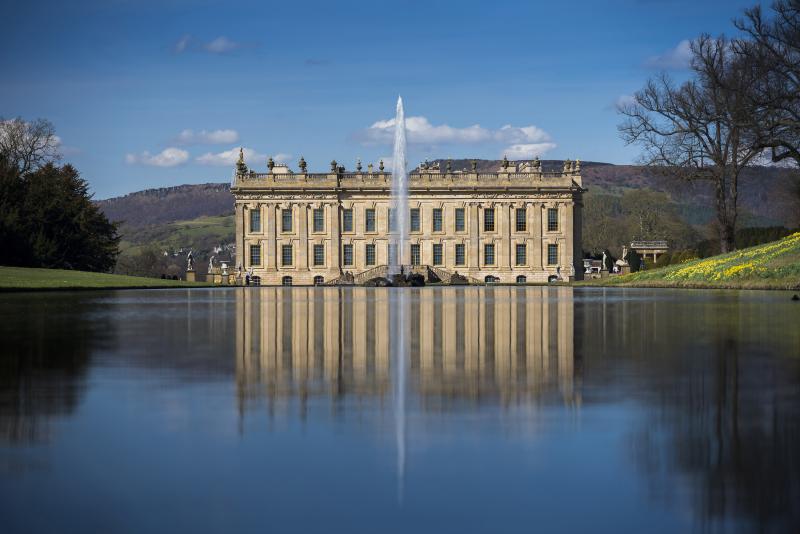 Exterior Images of Chatsworth House: © Chatsworth House Trust - Mit freundlicher Genehmigung von: sothebys.com
Exterior Images of Chatsworth House: © Chatsworth House Trust - Mit freundlicher Genehmigung von: sothebys.com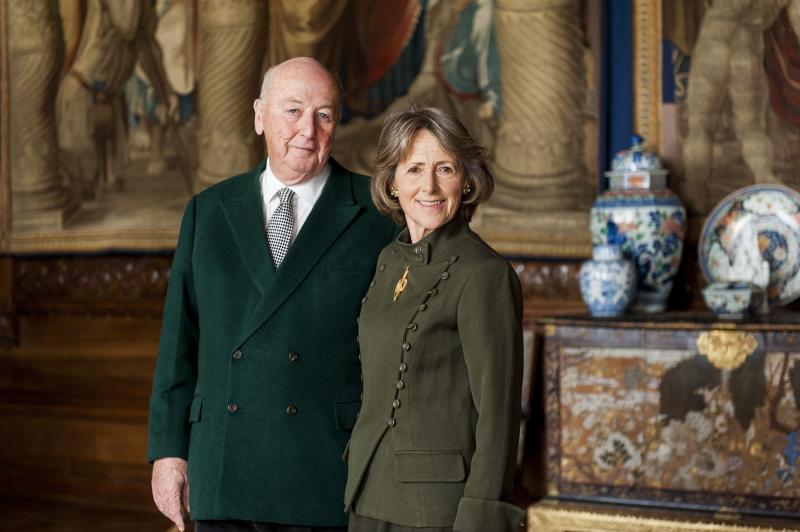 Photo Portraits of the Duke & Duchess of Devonshire: Photo by Simon Broadhead, © Chatsworth House Trust - Mit freundlicher Genehmigung von: sothebys.com
Photo Portraits of the Duke & Duchess of Devonshire: Photo by Simon Broadhead, © Chatsworth House Trust - Mit freundlicher Genehmigung von: sothebys.comCopyright © 2024 findART.cc - All rights reserved

